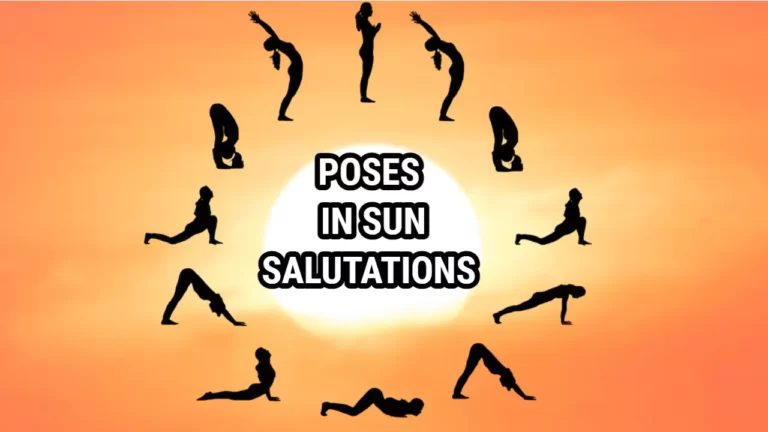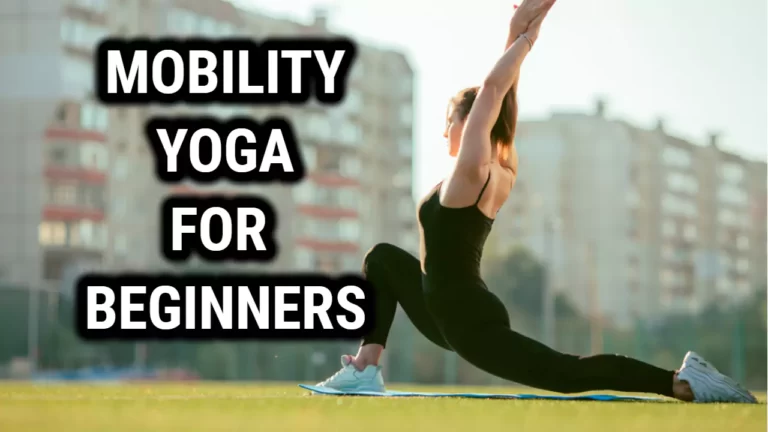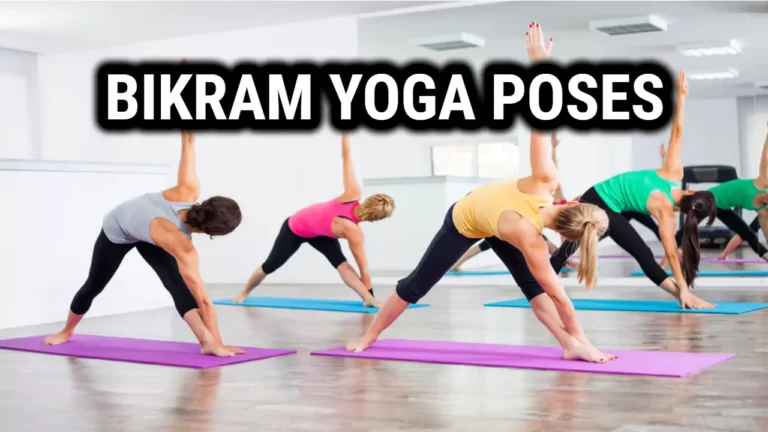What Is The Right Technique To Do Kapalbhati Yoga

For many people, yoga is a way of life. It is a practice that provides physical, mental, and spiritual benefits. One of the most popular forms of yoga is Kapalbhati yoga, which is also known as skull shining breathing. This yoga technique is designed to help practitioners improve their respiratory system and strengthen their abdominal muscles.
This article will provide a comprehensive guide on the right technique to do Kapalbhati yoga. It will cover the benefits of Kapalbhati yoga, the correct posture, and the breathing technique. By the end of this article, readers will have a clear understanding of how to perform Kapalbhati yoga correctly and safely.
Understanding Kapalbhati Yoga
Kapalbhati Yoga is a type of Pranayama, which is a breathing exercise in yoga. It is a powerful and energizing technique that is believed to have many physical and mental benefits. Kapalbhati Yoga involves rapid and forceful exhalations through the nose, followed by passive inhalations.
This technique is known to help cleanse the respiratory system, boost metabolism, and improve digestion. It is also believed to help reduce stress and anxiety, improve concentration, and increase overall energy levels.
Kapalbhati Yoga is usually performed in a seated position, with the spine erect and the hands resting on the knees. The practitioner begins by taking a deep breath in, and then forcefully exhaling through the nose while pulling the stomach muscles in towards the spine. The inhalation is passive and natural, and the focus is on the exhalation.
It is important to note that Kapalbhati Yoga should be practiced under the guidance of a qualified yoga teacher. It is not recommended for pregnant women, people with high blood pressure or heart problems, or those with respiratory issues.
Benefits of Kapalbhati Yoga
Kapalbhati yoga is an effective form of pranayama that can have various benefits for both physical and mental wellbeing. Here are some of the benefits:
- Weight loss: Kapalbhati is one of the best pranayama techniques for weight loss. It enhances metabolic activity and helps to burn out belly fat.
- Improved digestion: Kapalbhati cures common digestive problems such as stomach pain, gas, ulcers, constipation, or diarrhea.
- Control diabetes: Kapalbhati effectively controls diabetes. It stimulates the pancreas, which in turn helps in the secretion of insulin.
- Better respiratory health: Kapalbhati improves respiratory health by increasing lung capacity and oxygen intake.
- Improved circulation: Regular practice of Kapalbhati can improve blood circulation in the body, which can help treat problems like dry nails, hair fall, hands getting cold, and various types of skin allergies.
- Reduced stress and anxiety: Kapalbhati can help reduce stress and anxiety by calming the mind and promoting mental clarity.
- Increased energy levels: Kapalbhati can boost energy levels and leave you feeling more alert and awake.
- Better mental health: Kapalbhati can help reduce symptoms of depression and anxiety and improve overall mental health.
Overall, Kapalbhati yoga is a beneficial practice that can improve both physical and mental health. However, it is important to practice Kapalbhati correctly and under the guidance of a qualified yoga instructor to avoid any potential risks or injuries.
Preparation for Kapalbhati Yoga
Kapalbhati Pranayama is a powerful breathing technique that can offer numerous benefits to the body and mind. However, it is important to prepare properly before practicing this technique. Here are some tips to help you prepare for Kapalbhati Yoga:
- Choose a quiet place: Find a quiet place where you can practice Kapalbhati without any distractions. This will help you focus on your breathing and get the most out of the practice.
- Wear comfortable clothes: Wear loose, comfortable clothing that allows you to move freely. Tight clothing can restrict your breathing and make it difficult to practice Kapalbhati.
- Empty your stomach: It is important to practice Kapalbhati on an empty stomach. Avoid eating a heavy meal at least 2-3 hours before practicing Kapalbhati. If you are hungry, you can have a light snack like a fruit or a handful of nuts.
- Sit in a comfortable position: Sit in a comfortable position with your spine erect. You can sit cross-legged or in any other comfortable position. Make sure your shoulders are relaxed and your neck is straight.
- Start with gentle warm-up exercises: Before starting Kapalbhati, it is a good idea to do some gentle warm-up exercises to prepare your body. You can do some simple stretching exercises or practice some other gentle yoga poses.
By following these tips, you can prepare your body and mind for Kapalbhati Yoga and get the most out of this powerful breathing technique.
Step-by-Step Guide to Kapalbhati Yoga
Kapalbhati Yoga is a powerful breathing exercise that can help to purify the body and mind.
Here is a step-by-step guide to performing Kapalbhati Yoga correctly:
1. Sit in a comfortable position: Begin by sitting in a comfortable position with your spine straight and your hands resting on your knees. You can sit in any yoga posture that feels comfortable to you, such as Sukhasana, Padmasana or Vajrasana.
2. Take a deep breath: Take a deep breath in through your nose and fill your lungs with air. Expand your chest as you inhale.
3. Exhale forcefully: Exhale forcefully through your nose while pulling your navel towards your spine. Contract your abdominal muscles and push the air out of your lungs. The exhale should be short and quick.
4. Relax: After exhaling, relax your abdominal muscles and allow your lungs to fill with air naturally. The inhale should be passive and gentle.
5. Repeat: Repeat this process for 10-15 minutes, gradually increasing the duration as you become more comfortable with the practice. It is important to remember that Kapalbhati Yoga should be practiced on an empty stomach and under the guidance of a qualified yoga instructor.
If you experience any discomfort or pain while practicing this exercise, stop immediately and seek medical advice. In conclusion, Kapalbhati Yoga can be a powerful tool for purifying the body and mind.
By following this step-by-step guide, you can ensure that you are performing the exercise correctly and safely.
Common Mistakes to Avoid
While Kapalbhati yoga can be a great way to improve your breathing and overall health, there are a few common mistakes that people make while doing it. Here are some of the most important mistakes to avoid:
- Shuddering Shoulders: One of the most common mistakes people make while doing Kapalbhati is shuddering their shoulders while breathing in and out. This is an absolute no-no and can lead to discomfort or even injury. To avoid this mistake, it is advised to keep your shoulders relaxed and still while doing Kapalbhati.
- Incorrect Breathing: Another common mistake is not breathing correctly during Kapalbhati. It is important to inhale deeply through both nostrils and exhale with the forceful contraction of abdominal muscles. Make sure you are breathing correctly and not holding your breath during the exercise.
- Using Too Much Force: Some people try to use too much force while doing Kapalbhati, which can lead to strain and discomfort. It is important to use just enough force to contract your abdominal muscles and exhale, without pushing yourself too hard.
If you are new to Kapalbhati yoga, it is important to start slowly and gradually increase the intensity of the exercise over time. This will help you avoid injury and get the most benefit from the practice.
Related Read: What Is The Best Yoga Pose To Do Everyday
Tips For Practicing Kapalbhati Yoga
Kapalbhati yoga is an ancient breathing exercise that has many benefits. Practicing it regularly can help to improve physical, mental, and emotional health.
To do Kapalbhati yoga correctly, there are some important tips to follow.
First of all, when doing the exercises it is important to focus on the breath and keep a steady rhythm. Inhale deeply through the nose and then exhale forcefully through the mouth. This should be done in quick succession for several minutes at a time.
It is also important to practice meditation before and after Kapalbhati yoga to maximize its benefits. This will allow you to become more aware of your body and its needs, as well as increase your concentration levels.
Additionally, it is important not to push your body too hard during this practice as it can be dangerous if done incorrectly or with too much intensity.
By following these tips and practicing Kapalbhati yoga regularly, you can enjoy the many physical, mental, and emotional benefits that come with it. With consistent effort and dedication, this ancient breathing exercise can help you lead a healthier life overall.
Frequently Asked Questions
How Long Should I Practice Kapalbhati Yoga Each Day?
When practicing kapalbhati yoga, it is important to consider how long you should practice each day.
It is recommended to start with 5 minutes a day, gradually increasing up to 15 minutes as you become accustomed to the proper posture and breathing rhythm.
However, the amount of time you dedicate to the practice will ultimately depend on your own physical limitations and personal goals.
Are There Any Risks Associated With Kapalbhati Yoga?
As the old adage goes, ‘no pain, no gain,’ and this applies to kapalbhati yoga as well.
While there are many benefits to practicing kapalbhati yoga, it’s important to be aware of any potential risks associated with it.
Common side effects include nausea and lightheadedness due to the intense breathing exercises involved in the practice.
It’s always best to consult a expert before beginning any yoga routine, especially if you have any existing medical conditions.
What Other Types Of Pranayama Are Recommended For Kapalbhati Yoga?
When it comes to kapalbhati yoga, there are other types of pranayama that can be recommended for added benefits. These alternative breathing techniques can provide further health advantages and enhance the practice of kapalbhati yoga.
Examples include Nadi Shodhana Pranayama, Ujjayi Pranayama, Bhastrika Pranayama, and Surya Bhedana Pranayama. Each of these techniques offer their own unique set of benefits when combined with kapalbhati yoga.
Is It Necessary To Practice Bhastrika Pranayama Before Kapalbhati Yoga?
Investigating the truth of the theory that it is necessary to practice bhastrika pranayama before kapalbhati yoga, many practitioners believe that this can help create an energetic flow and enhance breath awareness.
This form of pranayama has been found to be beneficial for those looking to increase their overall energy levels while they practice kapalbhati yoga.
Ultimately, whether or not one should practice bhastrika pranayama before kapalbhati yoga depends largely on their own body and level of experience with these practices.
Also Read: The Benefits of Yoga Teacher Training: Transform Your Life and Your Career
Conclusion
Kapalbhati is a powerful breathing technique that can provide numerous benefits to the practitioner. It can help to improve lung capacity, increase energy levels, and reduce stress and anxiety. However, it is important to approach the practice with caution and to ensure that the technique is being performed correctly.
Remember to start slowly and gradually build up the number of repetitions. It is also important to maintain good posture and to avoid straining the neck or back during the practice. If you experience any discomfort or pain, it is important to stop the practice and seek guidance from a qualified yoga teacher.
By following the correct technique and practicing regularly, Kapalbhati can become an essential part of your yoga routine. With its numerous benefits for the mind and body, it is no wonder that this breathing technique has been practiced for centuries in India and beyond.





